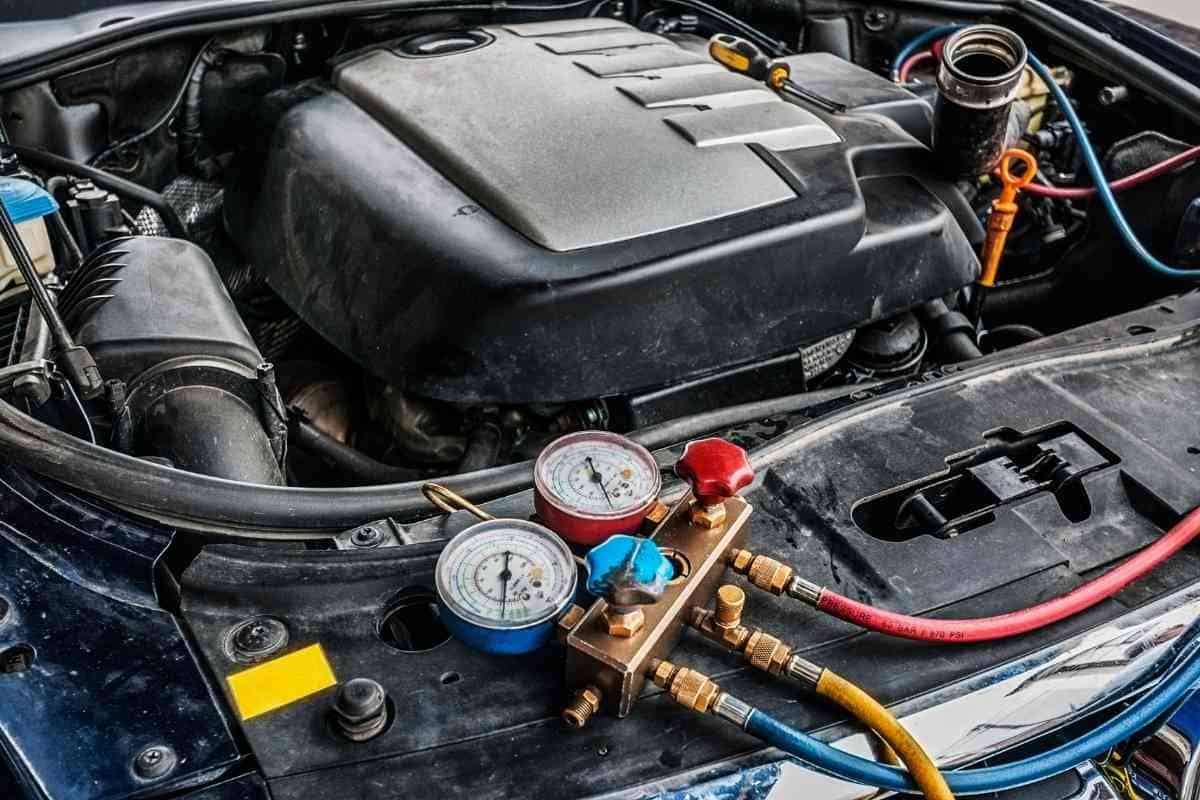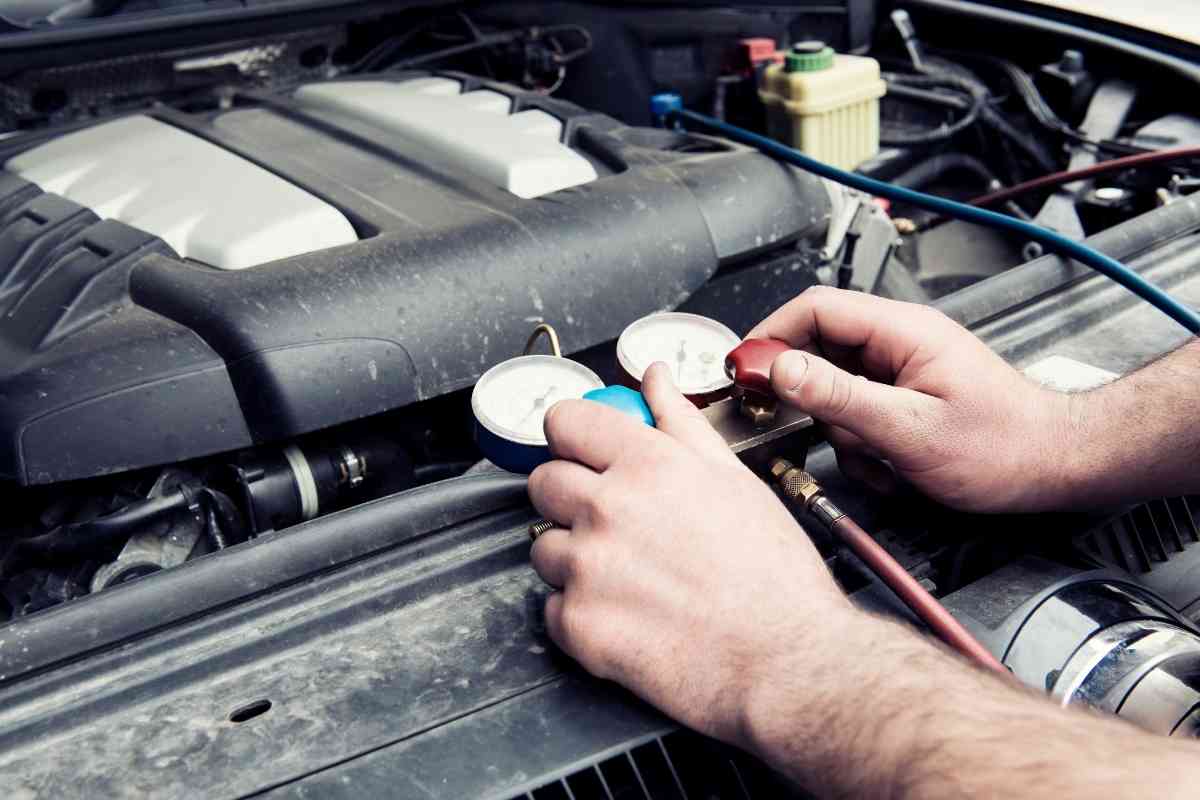How to Remove Freon From Car Without Recovery Machine
Do you need to remove freon from your car and don’t have a recovery machine? Are you not sure where to start? Do you need some direction and tips on how to do that? This article can help give you some steps to get started with removing freon from your car without a recovery machine.

How do you remove freon from a car without a recovery machine?
To remove Freon without a recovery machine, start by locating the suction side of the air conditioning compressor. Then make sure the valves are closed using a wrench. While using a lower voltage jumper, start draining the Freon from the compressor taking care not to spill any.
To learn more about the steps to take to remove Freon from a car without a recovery vacuum, keep reading.
Get Prepared
Before getting started, the best thing to do is to get prepared. We recommend gathering all materials, including the vacuum pump, safety gloves, and a wrench.
We always recommend using gloves because freon can be dangerous, and avoiding a situation that could cause excessive exposure is best.
Turn off Car AC system
The first step you are going to take to get started is to make sure the car’s air conditioning is off so that you can perform this removal without too many safety risks while you’re working. The most important part that you will want to make sure is off before starting any removal is the thermostat inside the car, including both the heat and the air conditioning systems.
The whole thermostat system should be completely turned off before you can start the next step. Make sure to double-check the work that you did to make sure that both systems are completely off. If you don’t do this, the removal process is much harder and more dangerous.
With all the heating and air conditioning system completely off, there is less of a chance of those systems interfering with the job by fluid making contact with your skin and causing irritation as well as making a mess of the work area. This will overall help prep your work area to get the job done safely, efficiently, and correctly. It is easier to take these precautions beforehand than to clean up excess, unnecessary messes afterward.
Connect Vacuum Pump
Now the vacuum pump can be connected and placed in the unit to remove all freon. We recommend waiting 5-10 minutes for the vacuum to finish.
After it seems like the vacuuming is complete, wait another 20-30 minutes and turn the pump on again. This will help get any excess still left over from before.
Look for any leaks, and be careful when using this method. It’s a bit unorthodox for some, but it’s the easiest for many people to handle other than using a recovery machine or visiting a local mechanic.
Remove freon

The second step you will take is when you first start getting into the work of the removal process. First, put on gloves. To start, you will need to identify the location of the air conditioning compressor which is the suction side rather than the flow side.
If you are not sure where this is exactly, you can look in the owner’s manual of the car and it should be able to tell you where that is located in your respective car. It can be found in the air conditioning/heat section of most owners’ manuals. Double check you have located the correct side as you don’t start working on the wrong side.
In addition to finding the suction side, you will need to also find the lower pressure side which can be located with the owner’s manual as well. Once you have identified both of these, you will need to connect the low-pressure side to the suction section. Make sure that these are connected properly and tightly. If you don’t, they will become disconnected quickly from the pressure of the air when you run it through.
Adjust low pressure valve
For step number three, you will need to find a wrench to be able to turn the valve on the low-pressure end of the unit to close it if it isn’t already. You will not be able to close this with just your hands, you will need to use a wrench.
If you don’t have a wrench or if the wrench isn’t quite doing the job all the way, you can use a hex key that will fit the valve with a better, tighter grip so you can close that valve easier and more securely. If you think that you will need a hex key prior to getting to this point, it would be smart to purchase that prior to starting this project so you have it ready when you need it.
After you close that side, you will also need to close the service valve on the high-pressure end. This side is different in the sense that you will not want to close this one especially tight, you are going to want to leave it slightly open. Once this is done, you can move on to step four.
Empty the lower pressure valve
Step four is the point that you will need to get your compressor ready. You will need to use a lower voltage jumper, this will empty the lower pressure valve. This process will happen slowly, so be aware that you will have to wait several hours for the valve to drain completely.
Once the valve is completely empty, you will need to go check that no fluid leaked into the high-pressure valve while the lower-pressure one was draining. If there was leakage, you will need to clean out the valve so that fluid doesn’t sit there in the valve. After both of these valves are drained, you can close them and make sure they’re tight.
If there was any liquid that got on the jumper, you will need to clean that off as soon as you can so it doesn’t damage the jumper. The same is true with the compressor. If there was any liquid that got on the compressor, you will need to clean that up rather quickly so no damage occurs to the compressor.
Close valves
The final step is to do a final check and make sure all the valves are all the way closed and closed tightly. You can use the wrench to help you close it tighter than your hand can or if you want to have those valves be closed extra tight, you can use the hex key for this purpose as well. You want no chance of the valves coming loose or open, so this is important that you make sure all of the valves are secure and aren’t going to move.
Once you have all the valves securely closed, you can clean up your other equipment and work areas. You can put away your compressor, your wrench, and your hex key, as well as any rags or towels you used to control the liquid that was released.
You will want to dispose of the liquid in a safe manner. You can take this to a hazardous waste plant to dispose of or you can use a hazardous waste container to put the liquid in and have it picked up with your other household trash.
Dispose Of The Freon Safely
Lastly, the freon must be cared for properly because it’s unsafe for humans and for the environment. It shouldn’t be treated like another bag of trash and thrown away.
This can be done by contacting local businesses that deal with this type of chemical to get rid of it. They can remove it for a small fee in most cases too.
Why Do You Need To Remove Freon From A Car?
Freon is a type of refrigerant that is used in cars. It helps to keep the car cool. Freon is also found in household appliances and air conditioners.
So why exactly would it need to be removed from a car? Here are some reasons.
Freon Is Old
The freon must be removed from the car if it is old and decaying. This will cause issues with the AC unit, too, like potential leaks or corrosion.
It’s also possible to see a check engine light come on because of freon issues. For example, freon is estimated to last up to five years and even less time in warmer climates.
For cars older than this, it’s possible the freon is old and needs to be removed and replaced. But this is considered a rare replacement in most cases.
The AC Unit Is Broken
A broken AC unit is an inconvenience that can lead to the vehicle overheating and becoming a potential hazard on the road. When this happens, it needs to be replaced, which is why freon needs to be removed.
It’s also possible the cause of the problem is a leak. Consistently low freon levels would be a good indicator of that. Removing the freon is recommended before removing the AC to avoid any leaks.
Is It Safe To Remove Freon From a Car Without A Recovery Machine?
The process of removing the freon from a car without a recovery machine is risky and not recommended. However, it’s safe when the proper steps are taken and safety gear is used.
The vacuum pump method will take more time using a compressor and recovery because it needs to be constantly hooked up for an extended period. The risk of leaking is much higher too.
We always recommend visiting a local mechanic to handle issues like this. It’s only a small fee to handle the problem with no direct risk in dealing with gasses like freon.
Key Takeaways
- Use a heavy-duty vacuum pump to remove freon from a car without a recovery machine because it can hold the freon safely, and connecting it to the compressor is easy.
- Removing freon using these methods is safe, but most experts advise against doing it at home without a recovery machine because of the safety hazards.
- Removing freon from an AC unit in a car is done because the freon is old and needs to be replaced or because the AC unit is bad, leaking, and needs to be replaced.
- If you’re worried, you can always enlist help from professionals.
